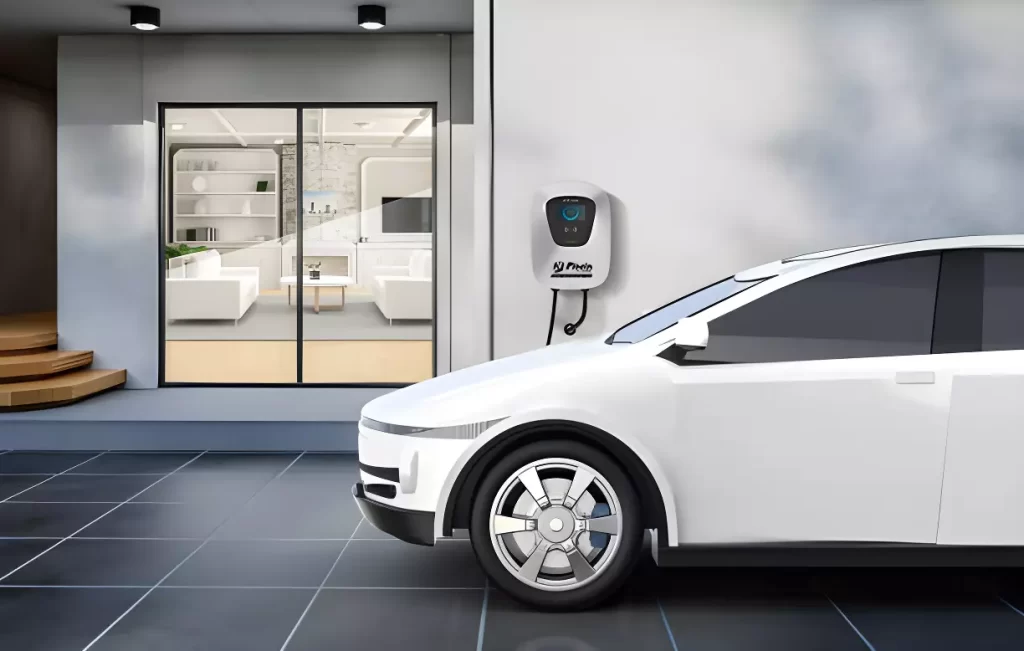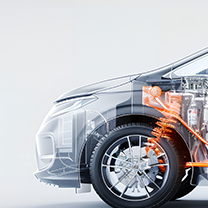
Products
Fast, Reliable, Everywhere

Solutions
Efficient, Innovative EV Charging Solutions.
Electric vehicles (EVs) rapidly transform our roadways, promising cleaner, more sustainable transportation. At the heart of this revolution is a critical component - the EV charger. These devices replenish the power of our electric vehicles, much like a fuel pump does for traditional gasoline cars.
However, with the rise of EVs, understanding the various charging options becomes essential for prospective and current EV owners. Among the types of chargers available, Alternating Current (AC) chargers are a prominent option, offering a blend of convenience, cost-effectiveness, and accessibility.

This comprehensive guide will delve into the world of AC EV chargers, demystifying their workings and examining their various types.
An AC (Alternating Current) EV (Electric Vehicle) charger is a device that provides electric energy to recharge electric vehicles using AC from the power grid. The power from an AC charger is converted to DC (Direct Current) by the vehicle's onboard charger to charge the battery.
An AC EV charger consists of three key components:
It is mainly suitable for home charging, residential, public, and office parking. It only takes 5-8 hours to charge the car with charging AC Compared with a DC EV charger, an AC EV charger has less loss to the car battery.
An AC EV charger is crucial to the infrastructure supporting electric vehicles. It offers a flexible charging solution that can be used in various locations, from homes to workplaces to public charging stations, making EV ownership more convenient and practical.
Regarding AC EV chargers, I have to introduce a DC EV charger; click here to read everything about it.
An AC (Alternating Current) EV (Electric Vehicle) charger works by converting AC from the power grid into DC (Direct Current) that can be used to charge an electric vehicle's battery. Here are the steps of how this works:
It's worth noting that while AC EV chargers are standard due to their lower cost and more straightforward installation, they generally offer slower charging compared to DC fast chargers, which provide DC directly to the vehicle's battery, bypassing the onboard converter and thus achieving much quicker charging times.
Electric Vehicle (EV) chargers come in different forms and can broadly be categorized into AC (Alternating Current) chargers and DC (Direct Current) chargers. Here are several reasons why one might opt to use an AC EV charger:
However, it's important to note that the choice between AC and DC charging isn't an either/or situation. Many EV owners use AC charging for their daily charging needs and then use DC fast chargers for long trips when they need to recharge quickly on the road. The best solution depends on your specific needs and circumstances.
The AC (Alternating Current) electric vehicle (EV) charging levels are Levels 1 and 2.
Level 1 Charging is the simplest form of EV charging. A standard 120-volt AC household outlet can take 8 to 20 hours or more to fully charge an electric vehicle.
They typically provide about 2 to 5 miles of range per hour of charging, making them best suited for plug-in hybrid electric vehicles (PHEVs) or overnight charging for battery electric vehicles (BEVs) with smaller batteries.
Level 2 chargers require a 240-volt AC circuit, similar to what extensive household appliances use (like clothes dryers or ovens).
Level 2 chargers are significantly faster than Level 1. On average, a fully depleted battery can be fully charged in 4-6 hours with a Level 2 charger, although some high-capacity batteries may take longer.
And it provides about 10 to 60 miles of range per hour of charging. This makes them suitable for all-electric vehicles and charging at public charging stations.
Please note that the charge rates can vary widely depending on the car's acceptance rate and the amperage of the Level 2 EVSE (Electric Vehicle Supply Equipment), among other factors. In other parts of the world, where residential voltages are typically higher, the distinction between Level 1 and Level 2 charging may differ.
If you've recently purchased an electric vehicle (EV) or are considering buying one, setting up an AC EV charging station can be straightforward. Here are some steps to get you started:
Piwin is one of the best AC EV charger suppliers in China; if you have any questions, contact our experts, and we will reply within 30 minutes.
Our advantages:
Provide after-sales service and engineer solutions.
